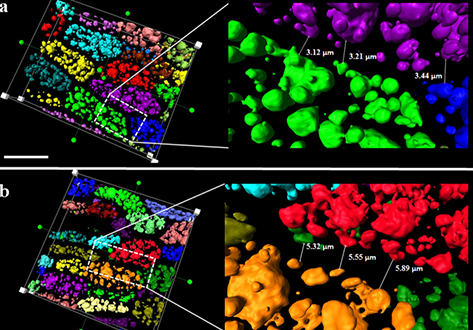3D Reconstruction of Lipid Droplets in the Seed of Brassica napus

Rapeseed is one of the most important and widely cultured oilseed crops for food and nonfood purposes worldwide. Neutral lipids are stored in lipid droplets (LDs) as fuel for germination and subsequent seedling growth. Most of the LD detection in seeds was still in 2D levels, and some of the details might have been lost in previous studies. In the present work, the configuration of LDs in seeds was obtained by confocal imaging combined with 3D reconstruction technology in Brassica napus. The size and shape of LDs, LD numbers, cell interval spaces and cell size were observed and compared at 3D levels in the seeds of different materials with high and low oil content. It was also revealed that different cells located in the same tissue exhibited various oil contents according to the construction at the 3D level, which was not previously reported in B. napus. The present work provides a new way to understand the differential in cell populations and enhance the seed oil content at the single cell level within seeds.